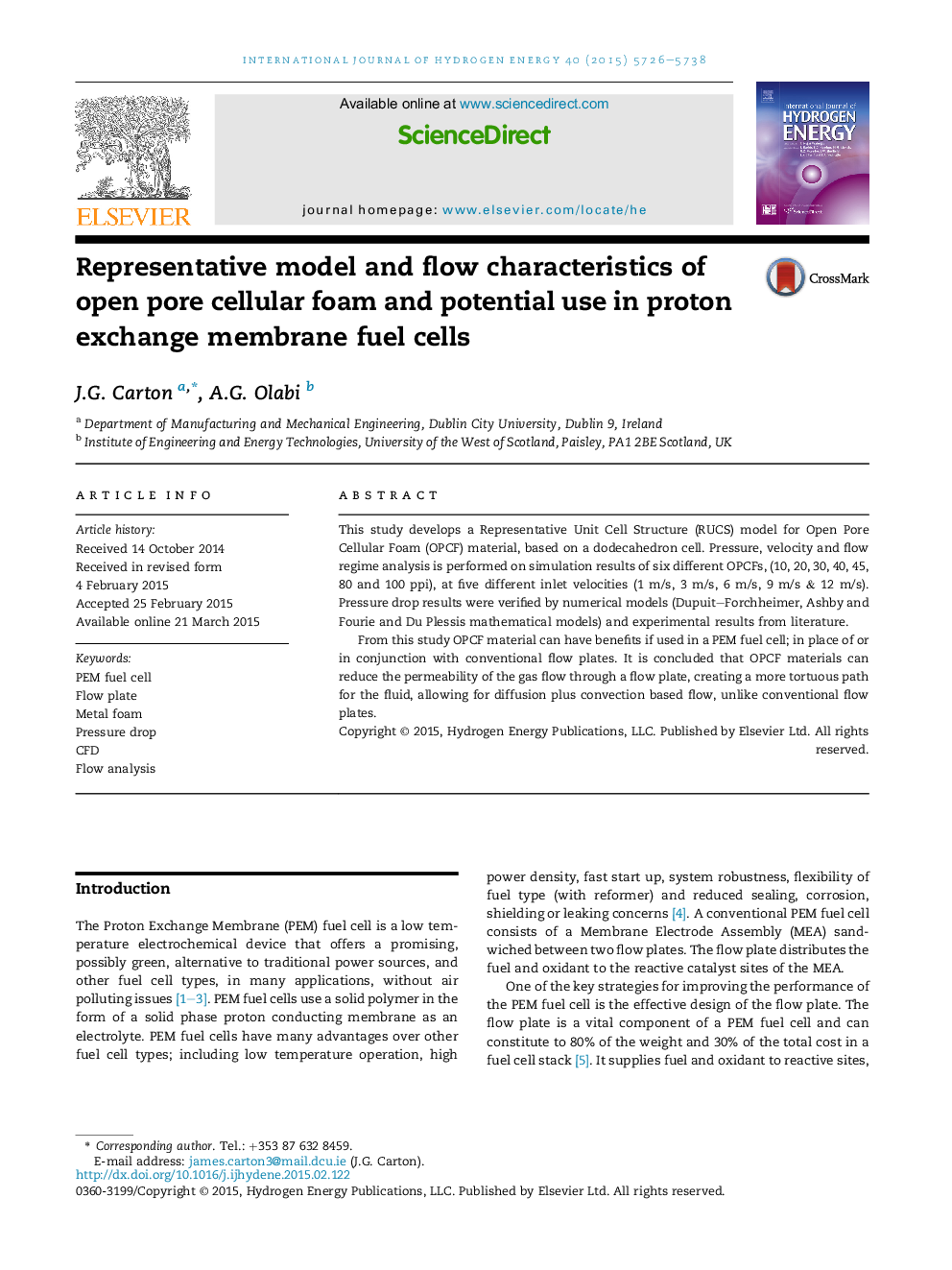| Article ID | Journal | Published Year | Pages | File Type |
|---|---|---|---|---|
| 1275628 | International Journal of Hydrogen Energy | 2015 | 13 Pages |
•We investigate new Open Pore Cellular Foam (OPCF) materials for PEM fuel cells.•We develop a Representative Unit Cell Structure (RUCS) model for (OPCF).•We measure ΔP and investigate fluid flow regimes from the model.•We compare ΔP simulation results to experimental results and mathematical models.•We conclude OPCF can ensure a tortuous gas flow, providing a low pressure drop, in PEM fuel cells.
This study develops a Representative Unit Cell Structure (RUCS) model for Open Pore Cellular Foam (OPCF) material, based on a dodecahedron cell. Pressure, velocity and flow regime analysis is performed on simulation results of six different OPCFs, (10, 20, 30, 40, 45, 80 and 100 ppi), at five different inlet velocities (1 m/s, 3 m/s, 6 m/s, 9 m/s & 12 m/s). Pressure drop results were verified by numerical models (Dupuit–Forchheimer, Ashby and Fourie and Du Plessis mathematical models) and experimental results from literature.From this study OPCF material can have benefits if used in a PEM fuel cell; in place of or in conjunction with conventional flow plates. It is concluded that OPCF materials can reduce the permeability of the gas flow through a flow plate, creating a more tortuous path for the fluid, allowing for diffusion plus convection based flow, unlike conventional flow plates.
